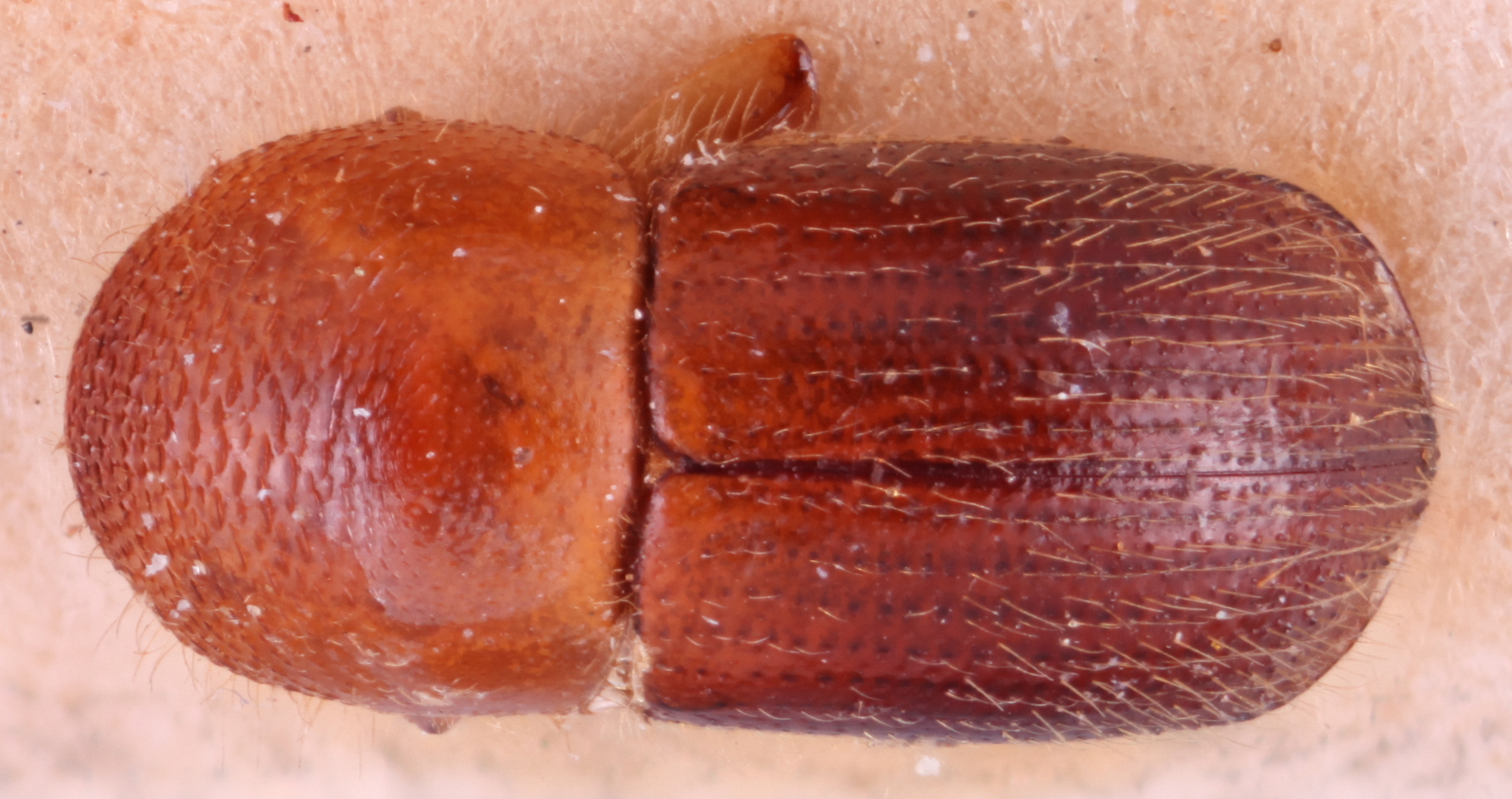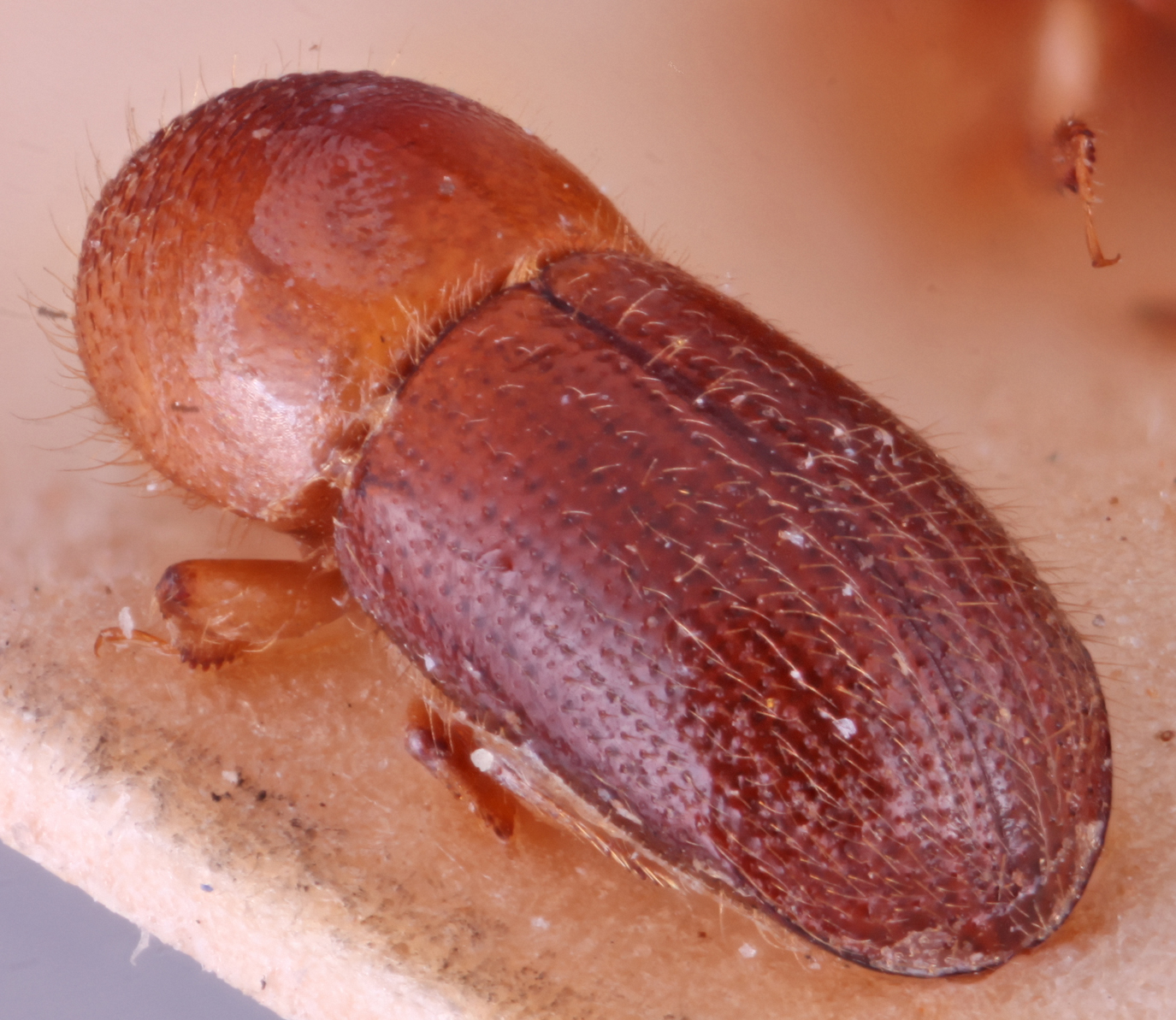Microperus fulvulus
|
Microperus fulvus lectotype lateral; S.M. Smith |
|
Microperus fulvus lectotype dorsal; S.M. Smith |
|
Microperus fulvus lectotype declivity; S.M. Smith |
|
Microperus fulvus lectotype frontal; S.M. Smith |
Taxonomic history
Xyleborus fulvus Schedl, 1939b: 48. Preoccupied by Murayama 1936Murayama 1936:
Murayama J. 1936. Notes sur les Scolytides (Coleacute;optegrave;res) de Honshucirc; et Kiushucirc;, Japon. Tenthredo 1: 121-149..
Xyleborus fulvulus Schedl, 1942c: 35 (new name for X. fulvus Schedl, 1939 nec Murayama 1936Murayama 1936:
Murayama J. 1936. Notes sur les Scolytides (Coleacute;optegrave;res) de Honshucirc; et Kiushucirc;, Japon. Tenthredo 1: 121-149.).
Microperus fulvulus (Schedl): Hulcr 2010: 111 (as a synonym of Microperus corporaali Eggers).
Synonyms
Xyleborus fulvulus Schedl, 1942c: 35. Smith et al., in prep.
Diagnosis
2.8−2.95 mm long (mean = 2.88 mm; n = 4), 1.93−2.19 times longer than wide. This species is distinguished by the elytralelytral:
pertaining to the elytra
discdisc:
the flat central upper surface of any body part (e.g. pronotum and elytra) flat; elytralelytral:
flat; elytralelytral:
pertaining to the elytra
declivitydeclivity:
downward slope of either the pronotum or elytra
 long, gradual; all declivitaldeclivital:
long, gradual; all declivitaldeclivital:
pertaining to the elytral declivity
interstriae uniformly granulategranulate:
pertaining to a coarse, grainy surface texture
 from basebase:
from basebase:
point or edge closest to the body; opposite of apex to apexapex:
to apexapex:
point or edge furthest from the body; opposite of base
 ; declivitaldeclivital:
; declivitaldeclivital:
pertaining to the elytral declivity
face convexconvex:
appearing rounded ; posterolateralposterolateral:
; posterolateralposterolateral:
relating to end of the side part/portion
 costacosta:
costacosta:
elevated ridge that is rounded at its crest, not necessarily with sharp appearance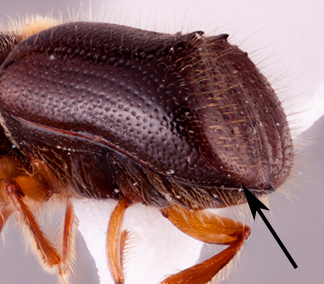 strongly carinate; interstriaeinterstria:
strongly carinate; interstriaeinterstria:
longitudinal spaces along the elytra between the striae, which is not as<br />
impressed and bear smaller punctures.
 densely covered with long, erecterect:
densely covered with long, erecterect:
pertaining to setae that have their apices directed away from the body and appear straight
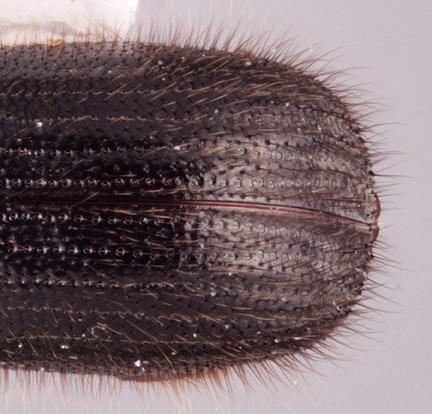 , hair-like setaeseta:
, hair-like setaeseta:
small hair-like or scale-like structure
, setaeseta:
small hair-like or scale-like structure
longer than two interstrial widths; striaestria:
punctures in rows, which may or may not be impressed to make grooves setose, setaeseta:
setose, setaeseta:
small hair-like or scale-like structure
short, recumbentrecumbent:
pertaining to setae that are flat against the cuticle
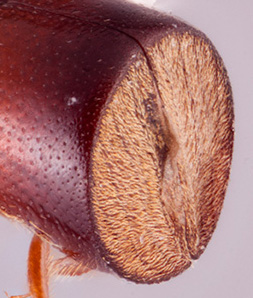 , as long as 1.5 strial widths.
, as long as 1.5 strial widths.
This species can be distinguished from the closely related M. chrysophylli and M. corporaali by the convexconvex:
appearing rounded elytral declivitydeclivity:
elytral declivitydeclivity:
downward slope of either the pronotum or elytra
 and strongly carinate posterolateralposterolateral:
and strongly carinate posterolateralposterolateral:
relating to end of the side part/portion
 costacosta:
costacosta:
elevated ridge that is rounded at its crest, not necessarily with sharp appearance .
.
May be confused with
Microperus chrysophylli and M.corporaali
Distribution
China (Chongqing, Sichuan, Yunnan), Indonesia (Sumatra), Thailand
Host plants
recorded from Cinnamomum camphora, C. iners (Lauraceae), Myristica fragrans (Myristicaceae), and Prunus yedoensis (Rosaceae) (Smith et al. 2020bSmith et al. 2020b:
Smith SM, Beaver RA, and Cognato AI. 2020b. A monograph of the Xyleborini (Coleoptera, Curculionidae, Scolytinae) of the Indochinese Peninsula (except Malaysia) and China. ZooKeys 983: 1-442. https://doi.org/10.3897/zookeys.983.52630)
DNA data
specimens not available for sequencing

